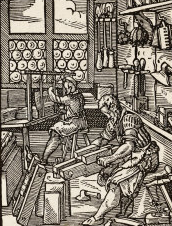Vertige de l'essai dans les autoportraits christiques de Fred Holland Day
Keywords:
autoportrait, F.H.Day, pictorialisme, photographie, christique, nu, Oscar Wilde, censureAbstract
SummaryAfter having fasted for weeks and gone through a real ordeal to acquire all the elements needed for an authentic Christic passion, Fred Holland Day started taking pictures of his starved body on the crucifix in july 1898. Which unattainable goal was he trying to reach in these 250 photographs ?
We propose to analyse the different essays of his Christic self portraits —The Seven Last Words of Christ, Crucifixion, The Entombment, Resurrection from the Tomb— using the tactile micro analysis, a technique inspired by historian Carlo Ginsburg and art historian Aloïs Riegl, close to the participatory objectivation of Bronislaw Malinowski. This method consists in reading a photograph by starting from the photograph itself, analysing the conscious or unconscious issues at stake, and establishing a close connection between the production, the aesthetic research and the circles or professional networks the photographer belonged to.
We will first consider how Fred Holland Day used the already existing Christic practice of self portraiture, and will then evoke the link with serial photography used at that time by other photographers like Edweard Muybridge. We will see Day’s efforts to transcent the limits of the genre by defending nudidy in photography. We will see his numerous references to classical sculptures (Laocoon), to German painting (Holbein) and romantic poetry (Keats). We will at last analyse how these Christic self portraits are deviated from their first objective when used in the numerous installations F. H. Day made for his exhibitions. They then acquire a new meaning and constitute a photographic trail defending free love and the beauty of the male body close to the ideals of his literary friends (Oscar Wilde).
We will conclude by showing how these Christic self portraits which still receive many criticisms must paradoxically be considered as the swan song of pictorialism and, because of of these new aspects, as a mise en abyme of a revolutionary practice of photography.
Published
Issue
Section
License
- Work submitted for publication must be original, previously unpublished, and not under consideration for publication elsewhere. If previously published figures, tables, or parts of text are to be included, the copyright-holder's permission must have been obtained prior to submission.
- Authors of accepted manuscripts will assign to L'Atelier the right to electronically distribute their article, or publish it in any form (Internet, CD ROM, printed copy) but authors will retain copyright and, after the article has appeared in L'Atelier, authors may republish their text (in print and/or electronic form) as long as they clearly acknowledge L'Atelier as the original publisher.


